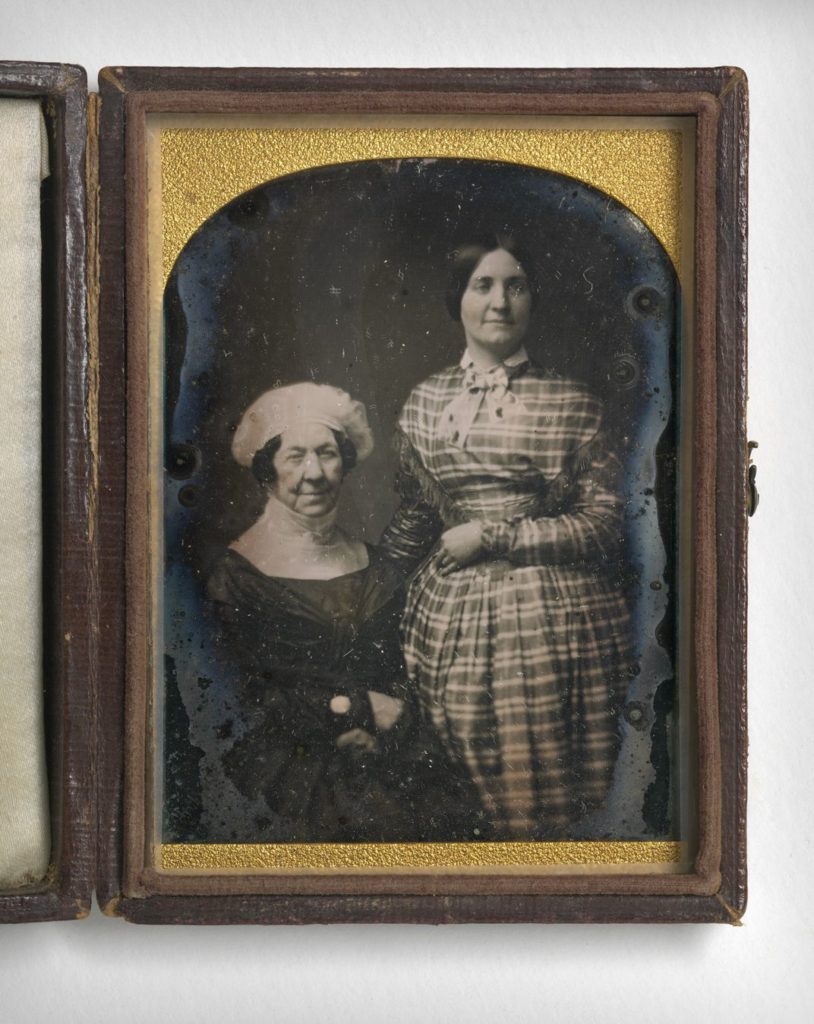Antebellum Portraits by Mathew Brady
By • December 6, 2017 0 1428

There is something almost indescribably beautiful about daguerreotype and ambrotype photography. The dominant methods of photography for the better part of the 19th century, they glow from within like Caravaggio paintings, shimmering reflections of the world on glass or mirrored surfaces. They feel like more than photographs, as if they truly contain some integral living embodiment of their subjects.
America was at the forefront of the photographic revolution, bequeathing our now-present future an astounding and unprecedented record of our country in its inchoate phases of cultural and physical development. We erupted with staggering speed from a new and untamed nation into a dominant, brutally industrialized world power. Incredibly, we have visual records of this transformation.
Portraits of men and women were most stunning of all. Through these early photographic methods, the pictures capture something very much like the souls of their sitters. Portrait photography from around the time of the Civil War exposes our national ambition, our diversity, our struggles and our burgeoning national identity through the eyes of our ancestors.
Mathew Brady was one of these photographers. Best known today for his Civil War-era photographs, he established his reputation as an internationally acclaimed portrait photographer more than a decade before the war.
Brady opened his first daguerreotype portrait studio in New York City in 1844, just five years after the introduction of the first commercially practical form of photography. By 1851, he was among the most successful camera artists in the United States, claiming top honors for his daguerreotypes at the Crystal Palace exhibition in London.
When the ambrotype began to eclipse the daguerreotype in the mid-1850s, Brady adapted, creating some of the most beautiful ambrotype portraits ever produced. As the decade drew to a close, his studio remained in the vanguard of photographic innovation, producing handsome, salted-paper print portraits from glass negatives.
At the National Portrait Gallery through June, “Antebellum Portraits by Mathew Brady” traces the trajectory of Brady’s early career through portrait daguerreotypes, ambrotypes and salted-paper prints. Contemporary engravings, as well as several advertising broadsides Brady used to market his portrait enterprise, are also included.
To break it down: a daguerreotype is a unique image on a silvered copper plate. Daguerreotypes have a mirror-like surface and are extremely fragile.
An ambrotype is made on a glass plate coated with a wet, light-sensitive substance that produces a negative image. The negative then has to be mounted against a dark background or coated with a dark varnish to give the illusion of a positive. Ambrotypes were much cheaper to produce than daguerreotypes, required a shorter exposure time and were generally easier to see and care for. The ambrotype made photography more affordable and spread its popularity among the working class.
They seem like a lot of effort — and they were. But it is remarkable how prepossessing these images are, particularly through the lens of a master such as Brady.
In some cases, they are wispy and soft with light, like Dutch Baroque come to life. Brady’s portrait of the American artist Thomas Cole shows a man swept away, physically still and yet stirring peacefully behind his eyes. Vermeer certainly comes to mind.
It is a suitable portrayal. The founder of the Hudson River School, Cole is among those responsible for bringing American art out of the dark ages with his almost ludicrously romantic visions of the American landscape. Those sweeping, saccharine vistas on 10-foot canvases that look like Neverland, which you have no doubt sauntered past in the National Gallery with palpable disinterest — a lot of those were by Thomas Cole.
Other portraits, however, are suffused with a crisp-edged clarity and a kind of naïve, divine stiffness that recall Jan van Eyck. Portraits of painter and engraver John Frederick Kensett and a Civil War artillery officer named John Pelham both contain this strange brew of severe formality and poorly concealed vulnerability that, on a plainly human level, is completely entrancing.
Despite the laboriousness of these processes, there is a reason that so many contemporary art photographers have been returning in recent years to such dated and literally toxic chemical techniques. It is because you can’t stop looking at these pictures. Sally Mann’s ambrotype self-portraits, on view at the National Gallery not long ago, are particularly worth a look.
This is a rare exhibition, in equal parts fine art, Americana and a history of photography. It is a remarkable opportunity to look into the eyes of the past — and have them staring right back at you.

